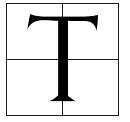The Most Successful Crusade
How Emperor Frederick II conquered Jerusalem without bloodshed
 The Middle Ages were not only a time of religious fervour, intolerance, and violence but also a time when people were thirsty for knowledge and adventure, a time of economic and cultural exchange. The contact with Muslim countries was by no means always violent — Western Europe imported sugar, spices and valuable cloth. In return, it exported wood, fur, and silver from newly developed mines. Alexandria and other cities in Egypt had significant colonies of Italian merchants, and the Crusader States in Outremer (roughly today’s Israel, Palestine, Lebanon and the coastal parts of Syria) depended on trade. They were enmeshed in local alliances — Christians and Muslims fought each other, but also side by side.
The Middle Ages were not only a time of religious fervour, intolerance, and violence but also a time when people were thirsty for knowledge and adventure, a time of economic and cultural exchange. The contact with Muslim countries was by no means always violent — Western Europe imported sugar, spices and valuable cloth. In return, it exported wood, fur, and silver from newly developed mines. Alexandria and other cities in Egypt had significant colonies of Italian merchants, and the Crusader States in Outremer (roughly today’s Israel, Palestine, Lebanon and the coastal parts of Syria) depended on trade. They were enmeshed in local alliances — Christians and Muslims fought each other, but also side by side.
With rising prosperity, Western Europe eagerly searched the knowledge of the East. Gebert of Aurillac (946–1003), who lived as a Monk in Barcelona and later became Pope (Sylvester II), introduced Arabic numbers to Western Europe — later, legends made him a magician. The Qur’an was translated into Latin around 1150 (this translation was used until the 18th century). Then in the 13th century, a significant knowledge transfer began — texts about Medicine, Botany, Astronomy, Agriculture, Animal husbandry and Philosophy were obtained from Constantinople and the Muslim…
